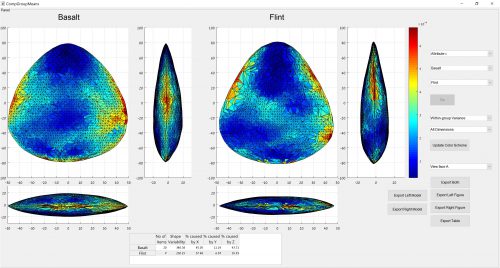New software will help in computerized analysis of archaeological findings
When archeology and computer graphics meet: in the Computational Archeology Laboratory at the Institute of Archeology they recently developed a new and interesting software called AGMT3D, which is designed to facilitate the formal analysis of archaeological findings. Until now, the archaeologists who returned from the excavations had to compare their findings with other findings by going to different institutions and making comparisons by sight alone, almost without advanced technological aids.
The innovative computer software created in the Computational Archeology Laboratory at the Institute of Archeology makes it possible for the first time to carry out a comprehensive formal comparison between tool assemblages without moving from place to place and to analyze tool assemblages in a much more in-depth, objective and efficient manner than before.

In addition, the new software enables a more accurate comparison between different forms of tools, which up until now has been done subjectively by the researcher and not according to unequivocal criteria. Due to the fact that the software works on computerized XNUMXD models of the scanned findings, researchers can now easily and simply remotely investigate findings that their colleagues have discovered without needing physical access to them. Moreover, the software makes complex mathematical and statistical methods accessible even to researchers who do not have a background in these fields.
The developers of the software emphasize that it has recently been able to analyze the shapes of certain stone tools so that it is possible to link them with the skill levels of their makers as well as link the shapes of ancient weapons, arrowheads, with the maker's houses in which they were produced.

The development of the software and the writing of the article are part of the doctoral thesis of Gadi Herzlinger, a research student in the laboratory of computational archeology at the university, under the supervision of Prof. Naama Goren-Anbar. Prof. Lior Grossman is the head of the Laboratory for Computational Archeology at the Institute of Archeology at the Hebrew University. Following the creation of the program, Herzlinger stated that "We hope that the software will enable as many researchers in the field as possible to reach new and interesting insights that could not be reached using traditional research methods."
